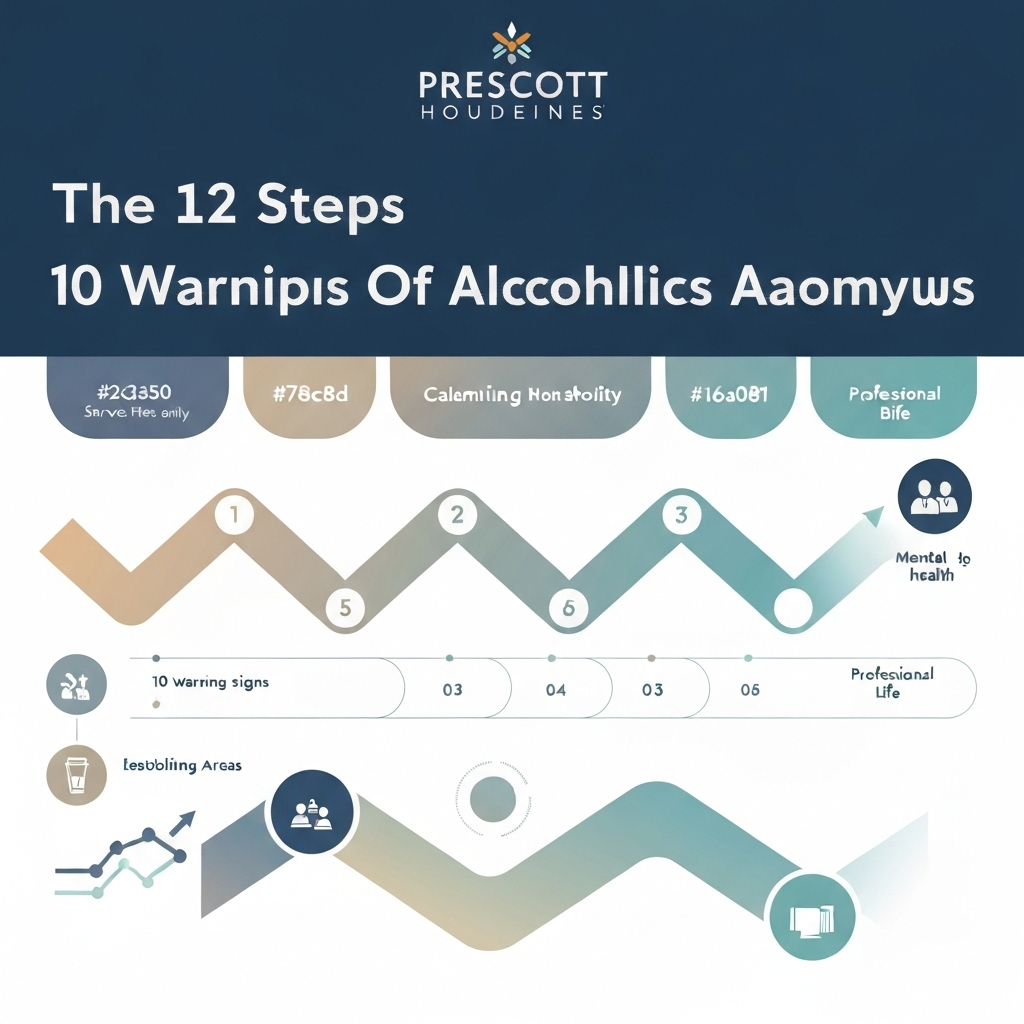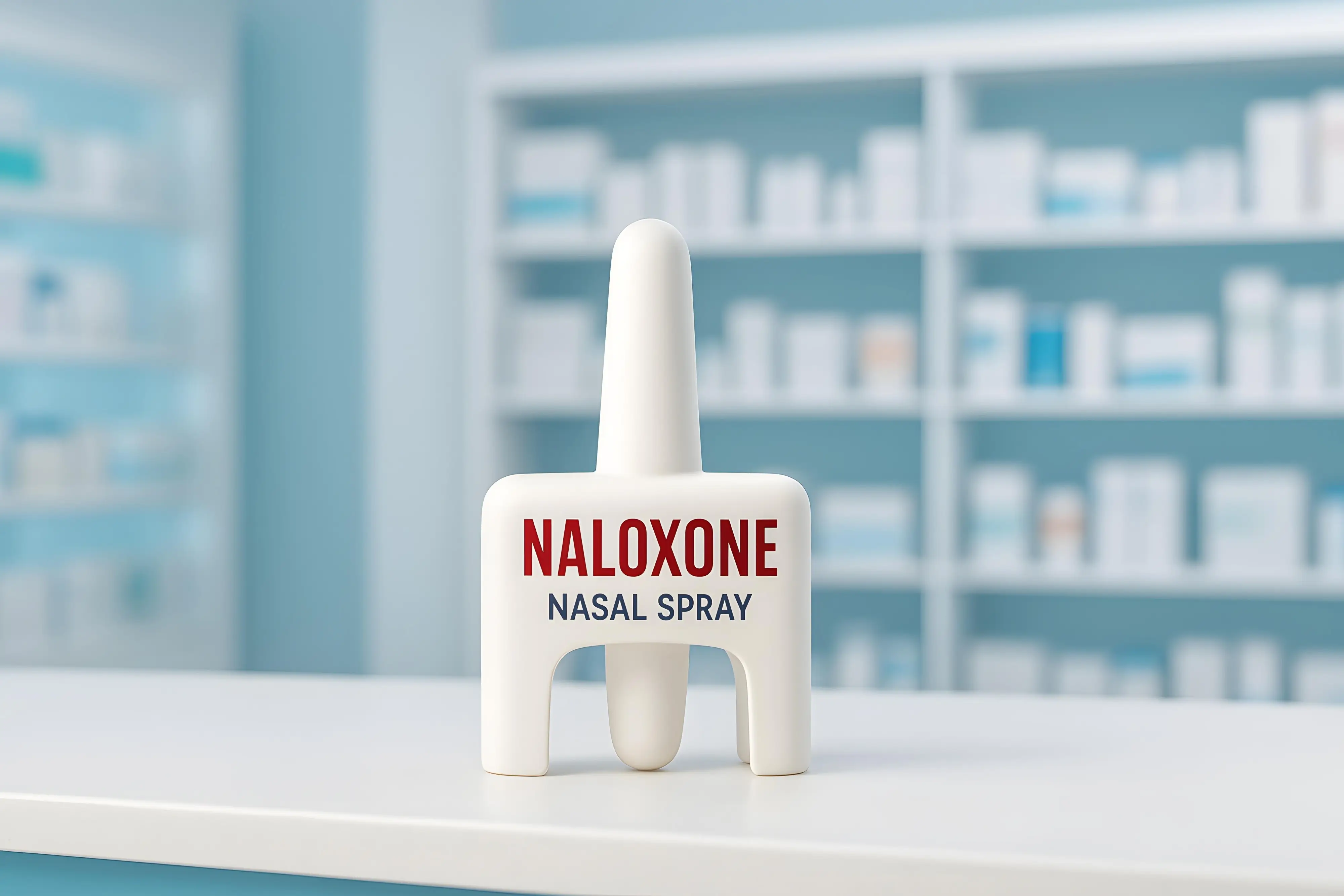Feeling like your relationship with alcohol is taking more than it gives? You're not alone. In a world where stress levels soar and alcohol is marketed as the answer to everything from celebrating success to drowning sorrows, many people find themselves questioning their drinking habits and seeking a path back to control and clarity.
The statistics paint a sobering picture: millions of Americans struggle with alcohol use disorder, yet many suffer in silence, unsure where to turn for help. For over 80 years, Alcoholics Anonymous (AA) has offered a beacon of hope through its global fellowship. At the heart of this program lies a set of guiding principles known as the 12 Steps—a framework designed not just to help people stop drinking, but to rebuild a more fulfilling and honest life from the ground up.
At Prescott House, we've witnessed firsthand how structured programs like AA can provide the foundation people need to reclaim their lives. The beauty of the 12 Steps isn't in their age—it's in their timeless ability to meet people exactly where they are and guide them toward genuine transformation.

Whether you're exploring recovery options for yourself or a loved one, or simply curious about how this time-tested program works in today's world, this guide will walk you through each step with a modern perspective. We'll explore the core ideas, address common questions, and provide a clear look at how the 12 Steps continue to support people on their journey to sobriety.
What Are the 12 Steps? A Modern Overview
Before diving deep into each step, let's establish what we're working with. The 12 Steps aren't rigid commandments or a quick-fix solution. Think of them as a progressive framework for personal growth—a roadmap that millions have followed to find freedom from alcohol's grip.
Here they are in their traditional form:
- We admitted we were powerless over alcohol—that our lives had become unmanageable.
- Came to believe that a Power greater than ourselves could restore us to sanity.
- Made a decision to turn our will and our lives over to the care of God as we understood Him.
- Made a searching and fearless moral inventory of ourselves.
- Admitted to God, to ourselves, and to another human being the exact nature of our wrongs.
- Were entirely ready to have God remove all these defects of character.
- Humbly asked Him to remove our shortcomings.
- Made a list of all persons we had harmed, and became willing to make amends to them all.
- Made direct amends to such people wherever possible, except when to do so would injure them or others.
- Continued to take personal inventory and when we were wrong promptly admitted it.
- Sought through prayer and meditation to improve our conscious contact with God as we understood Him, praying only for knowledge of His will for us and the power to carry that out.
- Having had a spiritual awakening as the result of these Steps, we tried to carry this message to alcoholics, and to practice these principles in all our affairs.
Now, if some of this language feels outdated or doesn't resonate with you, that's completely normal. The steps were written in the 1930s, and language evolves. What matters isn't the exact wording—it's the underlying principles of honesty, hope, surrender, self-examination, confession, willingness, humility, accountability, making amends, continued growth, spiritual connection, and service to others.
These aren't steps you race through in a weekend workshop. They're meant to be worked gradually, often taking months or even years to fully integrate into your life. The goal isn't perfection—it's progress.
Breaking Down the Steps: What Each One Really Means
Let's demystify these steps and explore what they look like in real life, beyond the formal language. Each step builds on the previous one, creating a foundation for lasting change.
Steps 1-3: The Foundation of Change

Step 1: Admitting Powerlessness
This isn't about being weak—it's about being honest. Step 1 asks you to recognize that your current approach to controlling your drinking isn't working. Maybe you've tried moderation, switching to "lighter" drinks, or promising yourself you'll only drink on weekends. If these strategies consistently fail, you're experiencing what Step 1 describes as powerlessness.
The "unmanageability" part goes beyond just drinking. It encompasses the ripple effects: missed commitments, strained relationships, work problems, financial stress, or health concerns. At Prescott House, we often see people who've successfully managed other areas of their lives but find alcohol uniquely resistant to their usual problem-solving skills.
Steps 2 & 3: Finding Hope and Direction
These steps introduce the concept of a "Higher Power," which can feel alienating if you're not religious. Here's the key: your Higher Power doesn't have to be God. It could be the collective wisdom of your AA group, the power of human connection, nature, the universe, or simply something greater than your individual will.
The practical application is this: if your own willpower hasn't been enough to overcome alcohol use disorder, perhaps it's time to draw strength from external sources—whether that's professional treatment, community support, spiritual practices, or evidence-based therapies.
Steps 4-7: The Deep Work
Step 4: Taking Inventory
This step involves writing a thorough examination of your life—your resentments, fears, harms you've caused, and patterns of behavior. It's not about self-punishment; it's about gaining clarity. Many people discover that their drinking was often a way to avoid dealing with underlying emotions or situations.
Modern approaches to Step 4 might incorporate therapy techniques, journaling prompts, or guided self-reflection exercises. The goal is understanding your triggers, motivations, and the role alcohol played in your coping mechanisms.
Step 5: Breaking the Isolation
Sharing your inventory with another person—whether your sponsor, therapist, or trusted friend—breaks the cycle of shame and secrecy that often perpetuates addictive behaviors. This step builds accountability and often provides relief as you realize you're not uniquely flawed or broken.
Steps 6 & 7: Embracing Change
These steps focus on willingness to change character traits that contributed to your drinking problem—things like dishonesty, selfishness, or avoiding responsibility. The process isn't about becoming perfect; it's about becoming more authentic and reliable.
Steps 8-9: Repairing Relationships
Making amends is often the most anxiety-provoking part of the program, but it's also frequently the most transformative. These steps aren't just about saying "I'm sorry"—they're about taking concrete action to repair damage where possible.
The process begins with identifying everyone you've harmed through your drinking, then carefully considering how to make appropriate amends. Sometimes this means financial restitution, sometimes it's a heartfelt conversation, and sometimes the best amends is simply changing your behavior going forward.
Importantly, Step 9 includes the caveat "except when to do so would injure them or others." This means you don't make amends that would cause more harm than good—like confessing an affair that your spouse doesn't know about just to ease your own guilt.
Common Challenges and Modern Adaptations
The 12 Steps face some legitimate criticisms in today's recovery landscape. Some find the language too religious, others feel the emphasis on powerlessness contradicts modern empowerment-based approaches to mental health. Additionally, the program was originally designed by and for white men in the 1930s, which means it doesn't always speak to the diverse experiences of today's recovery community.
However, many people successfully adapt the steps to fit their personal beliefs and circumstances. Secular versions exist, and many groups welcome interpretations that work for individual members. The core principles—honesty, accountability, making amends, continued growth, and helping others—remain relevant regardless of specific religious beliefs.
At Prescott House, we've seen people combine the 12 Steps with therapy, medication-assisted treatment, SMART Recovery techniques, and other evidence-based approaches. The most successful recovery plans often incorporate multiple tools and strategies, with the 12 Steps serving as one valuable component among many.
Some people struggle with the idea of calling themselves "powerless," preferring to frame Step 1 as recognizing that their previous methods of controlling their drinking haven't worked. Others reinterpret the "Higher Power" concept as accessing inner wisdom, professional help, or community support rather than a divine entity.
Your Path Forward: The 12 Steps in Today's Recovery Landscape
The 12 Steps of Alcoholics Anonymous have guided millions toward recovery for over eight decades, not because they're perfect or universally applicable, but because they address fundamental human needs: the need for honesty, community, accountability, and purpose. While the language may feel dated and some concepts may not resonate with everyone, the underlying framework offers valuable tools for personal transformation.
Recovery isn't a one-size-fits-all journey. Some people find their path through AA meetings and working the steps with a sponsor. Others integrate the 12 Steps with professional therapy, medical treatment, or alternative recovery programs. Many combine multiple approaches, drawing strength from whatever resources speak to their unique situation and values.
The most important takeaway isn't whether the 12 Steps are right for you—it's that help is available, hope is real, and recovery is possible. Whether you connect with the spiritual aspects of the program, adapt the steps to fit your personal beliefs, or use them alongside other treatment modalities, what matters most is taking that first step toward change.
At Prescott House, we understand that everyone's recovery journey looks different. Our comprehensive approach combines evidence-based treatments with time-tested programs like AA, creating personalized care plans that meet you exactly where you are. We've seen firsthand how the principles underlying the 12 Steps—honesty, accountability, making amends, and supporting others—can transform lives when integrated into a broader treatment approach.
If you're ready to explore your options for recovery, whether that includes the 12 Steps or other pathways, remember that seeking help is a sign of strength, not weakness. Your story doesn't end with addiction—it can begin anew with recovery. The first step, no matter which program you choose, is reaching out.
Ready to take the next step in your recovery journey?Contact Prescott House today to learn about our comprehensive addiction treatment programs and discover how we can support you in building the life you deserve. Recovery is possible, and you don't have to do it alone.
References
- Alcoholics Anonymous
- The Twelve Steps - Alcoholics Anonymous
- Twelve Steps of Alcoholics Anonymous - Hazelden Betty Ford Foundation
- The 12 Steps Of AA | Alcoholics Anonymous Program - Alcohol.org
- The Benefits & Limitations of 12 Step Programs for Addiction - Recovery Centers of America
- A Modern Take on The Twelve Steps - Principles Recovery Center













